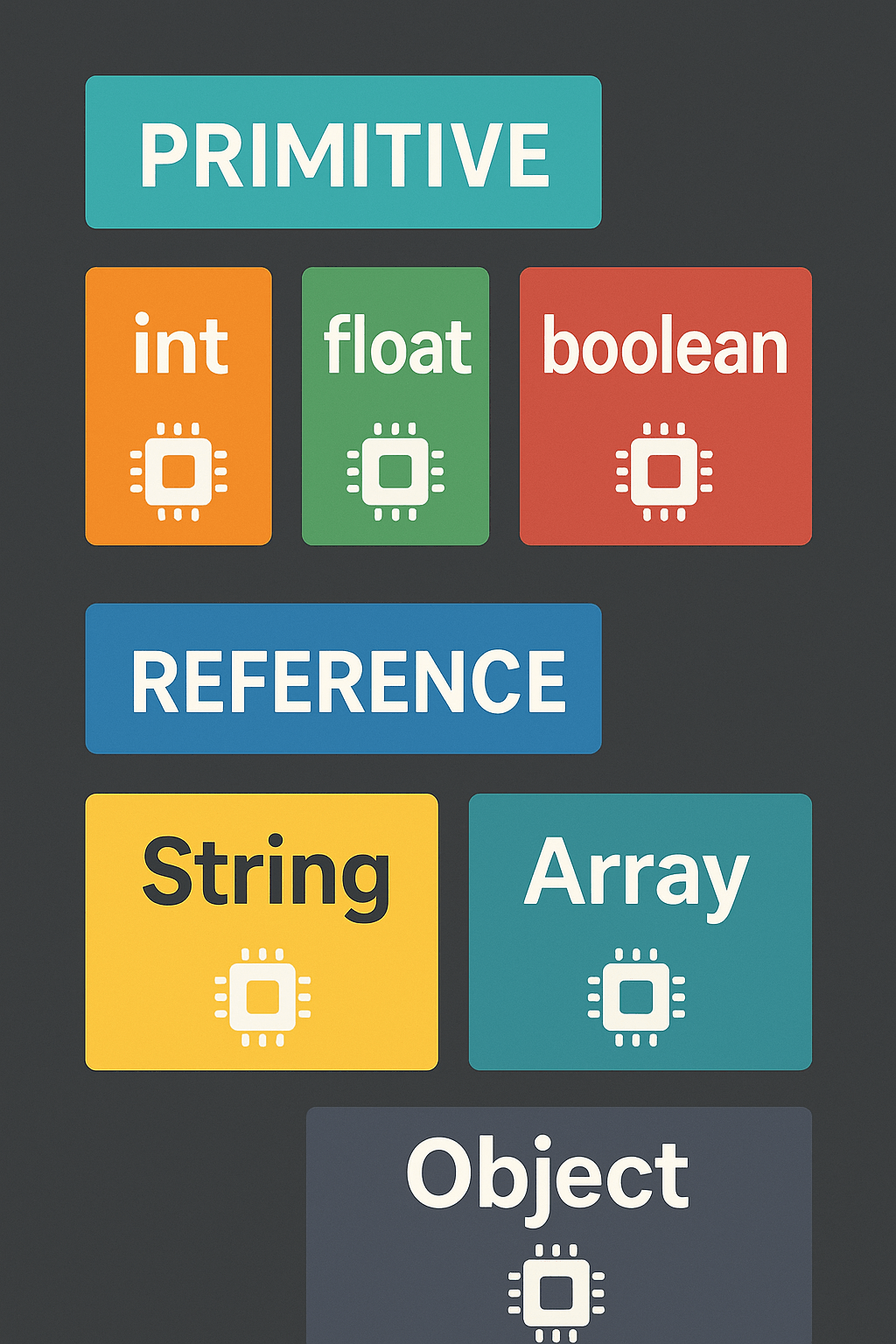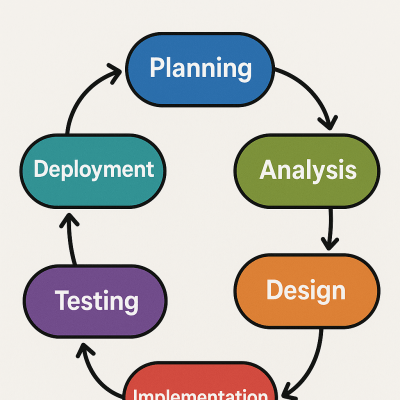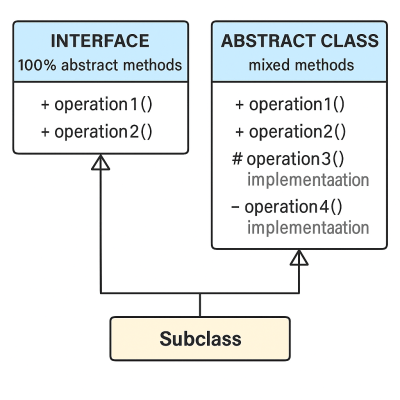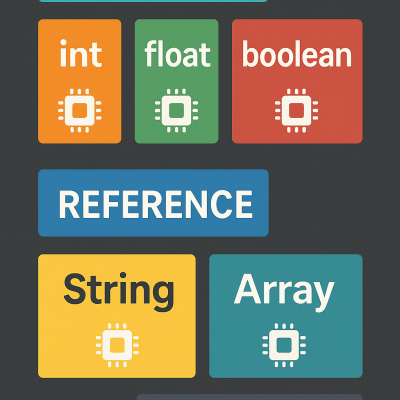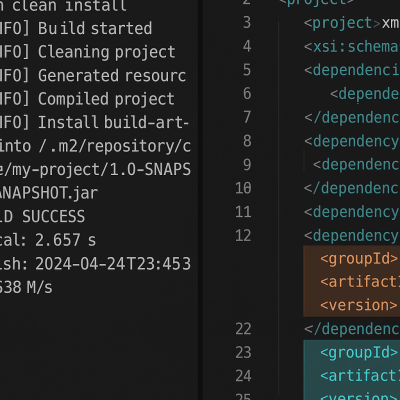Java Data Types Diagram
Java Data Types Overview
Java data types define the kind of data variables can hold. This foundational concept includes both primitive and reference types. In the image, we see popular Java data types: int, float, boolean, String, and Array. Java primitive types like int, float, and boolean represent single values with specific memory sizes. Moreover, these types enable efficient memory use and performance. On the other hand, reference types such as String and Array point to objects stored in memory. Therefore, they offer flexibility for more complex data structures. Understanding Java data types is essential for every Java developer. In addition, it ensures proper variable declaration, type compatibility, and program stability. Java data types reduce bugs, enhance code readability, and optimize resource management. Furthermore, knowing when to use primitive versus reference types improves program performance. This classification allows Java to enforce strict type-checking, making your code safer and easier to debug. Mastering these categories ensures a strong foundation in Java programming.
Key Features of Java Data Types
- Primitive Types: Java primitive types (int, float, boolean) store basic values directly in memory for speed.
- Reference Types: Reference types like String and Array store memory addresses pointing to objects, using Java’s heap.
- Memory Efficiency: Java uses fixed sizes for primitive types and dynamic memory for reference types, optimizing space and performance.
What’s Included with Java Data Types
- Color-coded representation of primitive types (int, float, boolean) and reference types (String, Array) in Java.
How to Use Java Data Types
- Choose a primitive type when storing single, simple values like numbers or true/false logic.
- Use reference types for complex data like strings, collections, or custom objects—ensuring flexibility and scalability.
Ideal Uses and Placement
- Use Java primitive types for mathematical operations, counters, and condition checks in applications.
- Apply Java reference types when working with objects like user data, arrays, or strings.
Java Data Types Specifications
- Includes int, float, boolean (primitive); String, Array (reference)—each visually separated for clarity.
Optimized Imagery & Alt Text
Explore More Resources
- Find similar products: Products Page
- Gain further insights: Our Blog
- Enhance your understanding: AI & QA Resources
- Learn from experts: Oracle Java Data Types Guide
Why Choose Java Data Types?
Java data types ensure code clarity, memory efficiency, and type safety. Primitive types offer speed and predictability. Reference types provide flexibility. Moreover, proper data typing reduces runtime errors. This essential knowledge supports robust and scalable application development.
Order Your Java Data Types Chart Today!
Grasp Java fundamentals faster with this vibrant visual guide to primitive and reference data types—perfect for learners!
$4.79
- ✅ Instant Download Available
- 🖼️ Ultra High-Resolution 4K PNG + JPG (4096×6144, 300 DPI)
- 🖨️ Prints Beautifully up to 13.6×20.5 inches
- 🚫 Personal Use Only (Not for Resale)
- 💾 Digital Product – No Physical Item Shipped
- 📥 Instant Access via Download Link Post-Purchase
All 4K images include the label "4K" in their title.
If your selected image does not include "4K", please contact us for your complimentary upgrade.
Related products
- 𝐁𝐨𝐭𝐚𝐧𝐢𝐜𝐚𝐥 𝐅𝐥𝐨𝐫𝐚𝐥 𝐍𝐚𝐭𝐮𝐫𝐞'𝐬 𝐋𝐢𝐠𝐡𝐭
Vibrant Parrot In Golden Light(4K)
$8.99 Add to cartRated 0 out of 5

